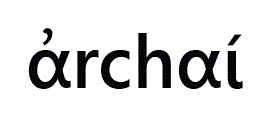The decorative scheme from the throne room of King Ashurnasirpal II Palace
nº2 (january, 2009) • Archai: As Origens do Pensamento Ocidental
Autor: Philippe Racy Takla
Resumo:
Texto Completo: http://periodicos.unb.br/index.php/archai/article/view/320/175
Palavras-Chave: Assyria,Ashurnasirpal II,Palace,Archaeology

Archai: As Origens do Pensamento Ocidental
Archai: Journal on the origins of Ancient Thought is published three times a year by Archai UNESCO Chair (University of Brasilia, Brazil).
It is published in Brazil (University of Brasília/Annablume) and in Portugal (Coimbra University Press, IUC), both printed and electronic free online access.
All manuscripts will undergo blind-review by peers.
Archai Journal is committed to a speedy and author-friendly review process; Authors can expect to receive notification the editorial decision within four months.
It is indexed by Web of Science - ESCI (Emerging Sources Citation Index), SciELO, European Reference Index for the Humanities and Social Sciences (ERIH Plus), L’Année Philologique, Philosopher‘s Index, DOAJ, Phil Brasil, Latindex, Cengage Learning, Google Schoolar, BASE, Diadorim, PKP Index and Portal de Periódicos da CAPES. It has Impact Factor 5.171 in the Scientific Journal Impact Factor and it got the second best grade (A2) of its field (Philosophy) in the latest Qualis CAPES evaluation.
